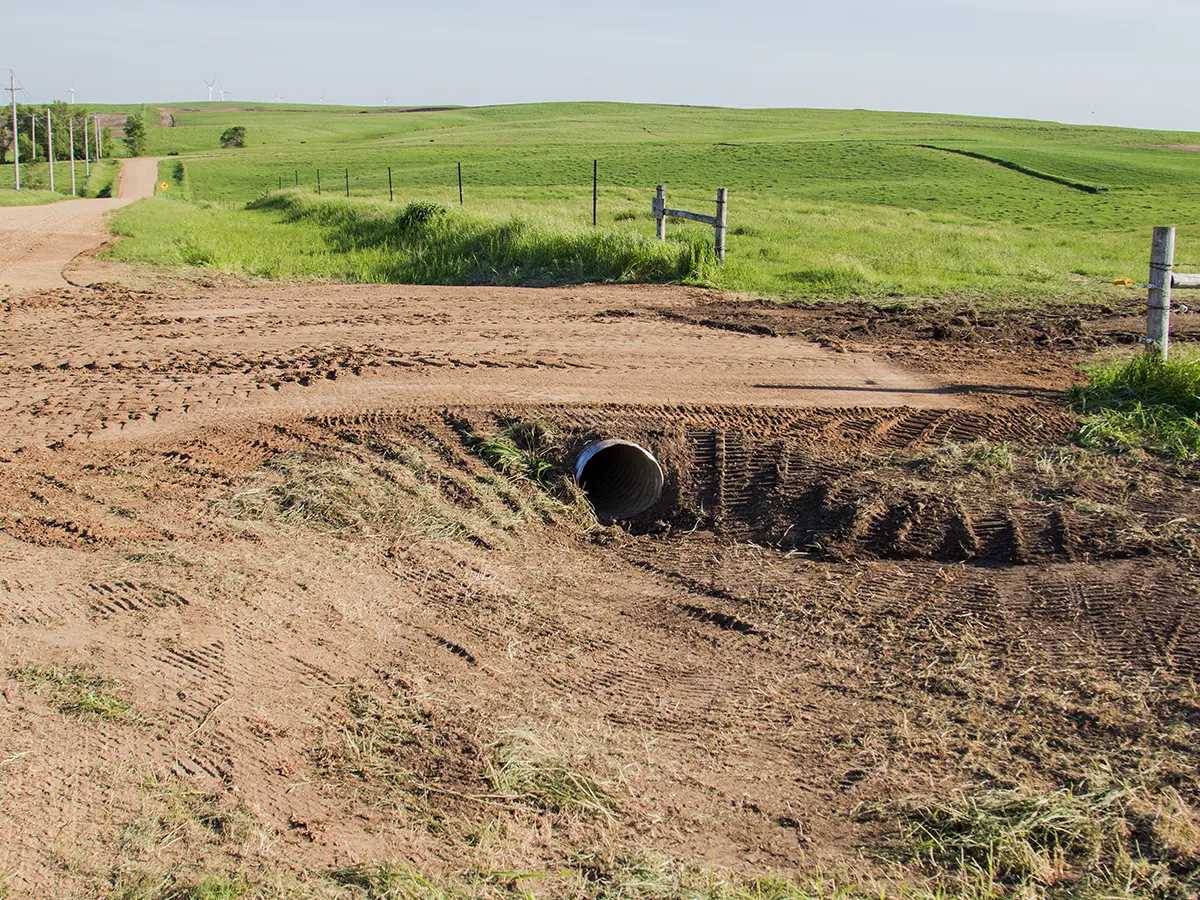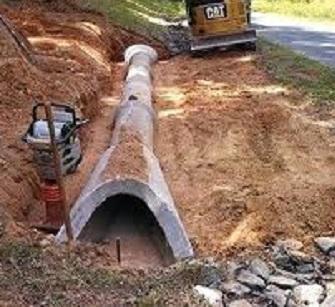Top Quality Road Construction for Long-Lasting Roads
Top Quality Road Construction for Long-Lasting Roads
Blog Article
Culvert Setup Made Easy: Step-by-Step Guide for Success
Setting up culverts might appear like a simple task, but making sure an effective end result requires careful planning and execution. From selecting the proper culvert dimension to integrating appropriate drain procedures, each action in the installation procedure plays an essential function in the functionality and long life of the culvert system. By adhering to a systematic strategy and focusing on key information, the setup can continue efficiently, reducing possible concerns down the line. Keep tuned to reveal the essential steps and factors to consider that can make culvert installment a smooth and effective venture.
Choosing the Right Culvert Size
Selecting the proper culvert size is crucial for ensuring reliable water circulation and architectural stability in culvert installation projects - Pad Construction. The size of the culvert straight affects the flow ability of water with the framework. A culvert that is also little can lead to flooding and overflow, while one that is as well big might cause decreased water rate, potentially creating debris build-up and obstructions
To determine the appropriate culvert size, aspects such as the watershed location, top circulation rates, and hydraulic effectiveness need to be very carefully thought about. Calculations based on these specifications assist in picking a dimension that can effectively manage the predicted water volume while lessening the threat of blockages and structural failing.
It is important to seek advice from design guidelines and requirements to make sure that the picked culvert size satisfies the job needs and regional policies (Pad Construction). By selecting the appropriate culvert size, task managers can maximize water flow, avoid possible concerns, and boost the overall efficiency and durability of the culvert installation
Preparing the Installment Site
Reliable culvert setup necessitates precise preparation of the installment site to ensure ideal structural support and functionality. Prior to starting the installment process, it is important to get rid of the site of any kind of particles, greenery, or obstructions that can restrain the culvert's placement. Making sure a level foundation is essential for the appropriate alignment and security of the culvert. This might entail grading the website to produce a smooth, even surface area that can properly support the weight of the culvert and any kind of expected loads. Furthermore, proper compaction of the dirt under the culvert is required to avoid clearing up or moving over time.
Moreover, it is important to consider factors such as soil structure, groundwater degrees, and environmental impacts when preparing the installment website. Conducting an extensive site assessment can help identify any prospective difficulties or dangers that might influence the culvert's efficiency. By putting in the time to prepare the installation website properly, you can aid guarantee an effective culvert setup that meets architectural requirements and ensures lasting capability.
Placing the Culvert Properly

The quality at which the culvert is positioned is critical for maintaining an appropriate incline for water circulation. A progressive incline helps avoid merging and advertises efficient water drainage. In addition, the culvert needs to be oriented appropriately to guarantee that the inlet and electrical outlet remain in the proper locations. This alignment is essential for the culvert to read work successfully in taking care of water circulation.
Backfilling and Compacting the Soil
Correct backfilling and compaction of the dirt around the culvert is vital to make certain security and avoid possible problems in the future. When the culvert is correctly put, the next crucial step is to backfill the area around it with appropriate material.
After placing the backfill product, it is essential to compact it in layers of consistent density. Utilizing a compactor or a mechanical tamper, small the dirt delicately to prevent damaging the culvert. Compaction assists in reducing the chances of settlement and makes sure uniform assistance around the culvert. It is crucial to compact the soil evenly on all sides of the culvert to keep its structural honesty.
Correct backfilling and compaction not only give stability to the culvert but likewise help in preventing soil erosion and preserving the longevity of the culvert system.
Making Sure Proper Drainage Integration
Integrating reliable drainage options plays a critical role in the total functionality and longevity of culvert setups. Appropriate water drainage integration is necessary for taking care of water flow, protecting against erosion, and guaranteeing the architectural stability of the culvert system. To attain this, it is vital to develop a comprehensive drain plan that considers elements such as the quantity of water anticipated, the topography of the location, and the kind of dirt existing.

Furthermore, incorporating click here to find out more features like erosion control steps, such as riprap or plant life, can additionally improve the performance of the drainage system. By very carefully preparing and implementing these water drainage remedies, culvert setups can operate successfully and stand up to the test of time.
Final Thought
Finally, correct culvert setup is find out this here critical for maintaining efficient water drainage systems. By selecting the right culvert dimension, preparing the installment site, positioning the culvert correctly, backfilling and compacting the dirt, and ensuring appropriate drainage integration, success can be achieved. Following these steps will certainly aid guarantee the durability and performance of the culvert, ultimately contributing to the total success of the drainage system.
Report this page